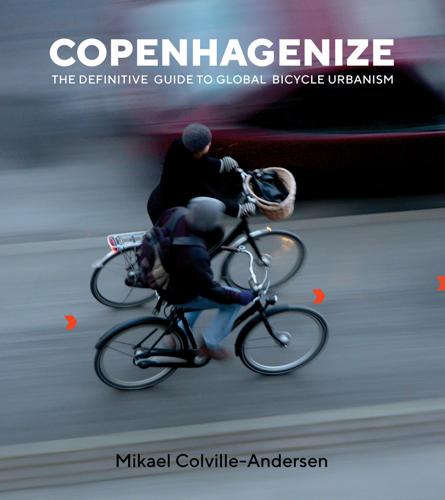
Copenhagenize: The Definitive Guide to Global Bicycle Urbanism
by
Mikael Colville-Andersen
Published 28 Mar 2018
What we see happening now is that bicycles are finally getting some serious accompaniment from a solid and dependable bass section. Cargo bikes. At this point, you probably know what I’m going to say. By now, you should be seeing a clear pattern in this book. Cargo bikes are nothing new. They’ve been around since the very beginning of the bicycle in our cities. Like the bicycle itself, the cargo bike’s remarkable history has been ignored. I’m not pulling any punches when I say that the cargo bike was a primary transport form in cities everywhere. I have scoured archives and seen photos of cargo bikes in so many different cities—in Russia, Australia, France, Mexico, Brazil, the United States, and so on.
…
It turns out that a whopping 51 percent of all goods transported in a European city be be moved by bicycle or cargo bike. That means we can free up a great deal of space by eliminating many of the trucks on our streets. The fleet of cargo bikes outside one of the many delivery companies in Copenhagen in the 1930s. © Museum of Copenhagen’s Photo Archive A Copenhagen family heading to the beach on two cargo bikes. One of the many vendors using cargo bikes to sell their wares. In this case, coffee. Copenhagenize Design Company’s conceptualization of depots on the harbor to connect barges with cargo bikes for last-mile delivery. Design and concept: the author and Adina Visan The percentage of goods in a city that can be moved by bike or cargo bike.
…
One of the more interesting pilot projects was a big pink car that appeared on the street. Copenhagen is a cargo bike city. There are 40,000 cargo bikes in daily use, and 26 percent of all families with two or more children have one. The cargo bike is, simply, our SUV, whether it is a two-wheeler or a three-wheeler. Secure parking is an issue for these bikes. Many people will park them in their courtyard, but that limits the ease of use when you are embarking on the school run or doing errands. By reallocating one and half car-parking spots, four cargo bikes can be securely parked on the street. Here’s how it worked. The shell is made of fiberglass and comprises four separate cabins, each with room for one cargo bike.
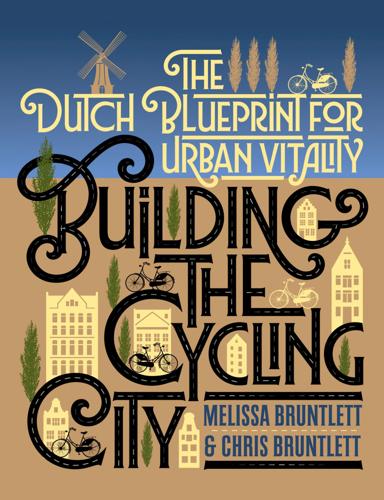
Building the Cycling City: The Dutch Blueprint for Urban Vitality
by
Melissa Bruntlett
and
Chris Bruntlett
Published 27 Aug 2018
With LEVV, they strategically invest in areas that will create new possibilities for “green” logistics in city centers, and with his wealth of knowledge and experience, Sluijsmans sees a direct link to how cargo bikes are at the heart of such enterprises. The International Cargo Bike Festival has actually been able to provide the launching pad for many new innovations when it comes to reintroducing the freight bikes from the nineteenth century back to the forefront of today’s transportation solutions. “At the Cargo Bike Festival, we see a lot of parties that came two or three years ago with a dream of building a cargo bike, and now they are actually making the bikes and building a company around them,” he recalls, noting that, not long ago, names like Yuba, Babboe, and Urban Arrow would be completely unknown except to diehard enthusiasts.
…
He is optimistic that the American market will develop in time: “In the end it will happen in the United States as well that our cargo bikes are everywhere,” Kreek predicts confidently. “In Amsterdam, it was just 15 years ago that you would be an exception to be riding your kids around in a cargo bike. It will take some time, but it will grow.” Back home in the Netherlands, Urban Arrow is quickly building a reputation as the “Rolls Royce of cargo bikes,” spreading the cargo-bike culture across the country, and not just as a family bike. Knowing the historic roots of the bakfiets, Kreek saw the potential for Urban Arrow’s modular systems to change the way freight is being moved through crowded urban streets.
…
That daily puzzlement eventually inspired a career change, with Sluijsmans dedicating his energy and passion towards cargo bikes. “At a certain point, I started to make a living by cycling, and one of the first things I did was start a bike messenger company,” he recalls. “But I wasn’t the type to ride a fixie [i.e., a fixed-gear bicycle, popular with messengers] with a bag across my chest, and I felt cargo bikes could be used to do the transport instead.” Serendipitously, the local SPAR—a grocery chain—had brought in a cargo bike for deliveries as a part of a pilot for the Province of Gelderland, but unfortunately, due to changes to the store’s physical space, the grocer was no longer able to get it into the store.
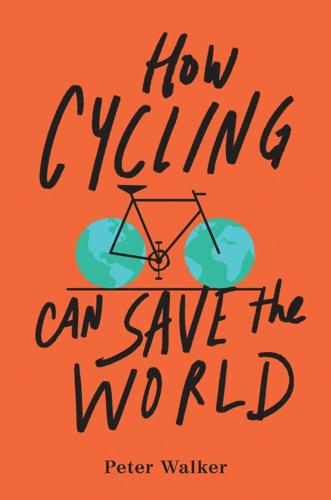
How Cycling Can Save the World
by
Peter Walker
Published 3 Apr 2017
They are now huge business, especially in Germany and the Netherlands, where around 20 percent of all bikes sold now have electric assist. This technology is helping drive a new type of bike-based freight business. When I visited Outspoken! Delivery, a pioneering cargo bike company in the traditionally bike-friendly English city of Cambridge, they were about to take delivery of their biggest e-cargo bike yet, a behemoth with a cargo bay almost the size of that in a small van. They let me try out what was their biggest machine at the time—a slightly smaller, electrically assisted three-wheeler. While still more or less big enough to carry that hypothetical fridge, it felt intuitive and straightforward to ride, with even the relatively small motor, meaning it was easy to start off from traffic lights.
…
The only way you can grow urban economies is by changing the way you manage logistics in a city.”6 As ever, the biggest steps are being made in more cycle-friendly nations in continental Europe. Vienna has a successful start-up business delivering healthy meals with a fleet of branded cargo bikes. One company in Prague promises its bikes can deliver a takeaway meal inside seven minutes of its being ordered. The Swedish city of Gothenburg, meanwhile, is specifically targeting cargo bike distribution as a way to make its streets more pleasant and human-friendly. It is currently testing a strange-looking contraption called the Armadillo. With four wheels, a roof, windshield, and doors, it resembles a high-tech golf car.
…
CHAPTER 9 1 Interview with the author. 2 Interview with the author. 3 Interview with the author. 4 Josh Strauss and Peter Walker, “Visijax: ‘The Brightest Cycling Jacket You May Ever See’” (video), The Guardian, October 24, 2012, https://www.theguardian.com/environment/bike-blog/video/2012/oct/24/visijax-cycling-jacket-video. 5 Peter Walker, “The Cargo Bike—Somewhere Inbetween the Courier and the Truck,” The Guardian, May 2, 2012, https://www.theguardian.com/environment/bike-blog/2012/may/02/cargo-bike-city-courier-truck. 6 Ibid. 7 Interview with the author. 8 Pete Jordan, In The City of Bikes: The Story of the Amsterdam Cyclist (New York: Harper Perennial), 2013. 9 “Ring a Bell? It’s Borrow-a-Bike Time Again . . . ,” Cambridge News, October 12, 2007, http://www.cambridge-news.co.uk/ring-bell-borrowabike-time/story-22461332-detail/story.html. 10 Interview with the author. 11 Interview with the author. 12 Interview with the author. 13 Colin Buchanan, Traffic in Towns: A Study of the Long Term Problems of Traffic in Urban Areas (London: H.
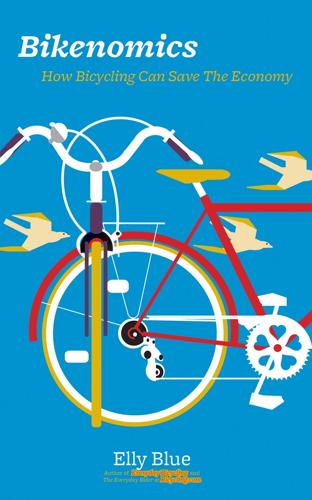
Bikenomics: How Bicycling Can Save the Economy (Bicycle)
by
Elly Blue
Published 29 Nov 2014
I debated the best way to carry a full-length mirror, and ended up resting it horizontally across the rack. Like the bicycle repair stand I bought and rode home with a year later, it had an amazing traffic calming effect—nobody felt inclined to pass me too closely. Over the years, I bought a trailer—and then a cargo bike—and then a trailer for the cargo bike—and that’s when things got really out of hand. I’ve moved a full size bed and frame (with a friend riding on top of the bed), a drafting table, a sleeper sofa, my dog, another bicycle and its rider, a load of twelve foot long 2x4s, and half a garden’s worth of plants. Car sharing services are available in my neighborhood if I need them, but I never have.
…
A year later, when he signed up for the hundred mile version of that first organized ride, finishing was no question. When their daughter was born, the McKissons bought an additional car again. But it didn’t take long for her to grow big enough to ride gleefully on the back of Mike’s longtail cargo bike. At that point, Irene made an unexpected announcement: She wanted a cargo bike too. After discussing all the logistics, the only sticking point seemed to be storage—with two cars and Mike’s bikes, there was no room in the garage. So they decided to take the biggest weight loss step of all—they sold their second car and said goodbye to 7,000 pounds of steel and plastic.
…
A tune up to scrape off the rust might cost $150—about the same as buying that big box store bike new. Helmets, locks, and lights are another expense—you could spend up to $100 for these basics, though it would be easy to spend somewhat less or quite a bit more if you were inclined. On the high end, a fancy European cargo bike might set you back as much as $4,000. If your heart is set on an electric pedal assist, that could add another $2,000. This brings us up to the sticker price of a decent-quality used car, which is in fact the vehicle that many of these bicycles are being bought to supplement or replace. This high end is not the norm, but many families and small business owners are finding that this sort of investment makes sense.
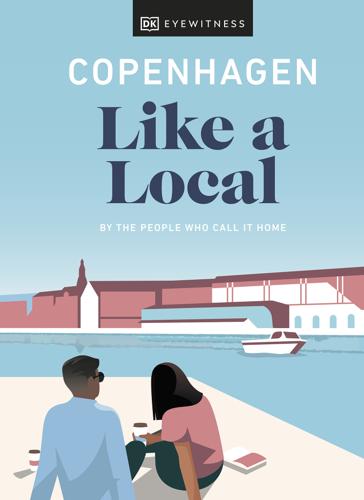
Copenhagen Like a Local
by
DK
g SHOP g Contents Bike Shops Christiania Cykler Bike Copenhagen Café Vélo Baisikeli Pedalatleten WeCycle Københavns Cykelbørs g Bike Shops g Contents Google Map CHRISTIANIA CYKLER Map 5; Fabriksområdet 91, Christiania; ///toward.wake.majority; www.christianiacykler.dk The Christiania cargo bike is a staple on the cycling scene. Locals balance everything from shopping bags to furniture in the front box, and parents on the school run furiously pedal their trailer of gleeful children along cycle lanes. Come to this store to see where it all started way back in 1984, when blacksmith Lars Engstrøm crafted the first cargo bike as a birthday present for his girlfriend, Annie. g Bike Shops g Contents Google Map BIKE COPENHAGEN Map 1; Nikolaj Plads 34, Indre By; ///pockets.enjoy.racks; www.bikecopenhagen.dk Looking to cycle the Danish way?
…
g Bike Shops g Contents Google Map PEDALATLETEN Map 4; Oslo Plads 9, Østerbro; ///renews.mimics.pushy; www.pedalatleten.dk This rental shop prides itself on its varied selection of bikes. Choose from robust classics, romantic tandems, all-electric smooth operators or ubiquitous Christiania cargo bikes, then set off and explore Østerbro. We recommend tracing the Søerne (the lakes that bracket the city centre), which are just a quick pedal away. Shop | Bike Shops Liked by the locals “Once you hop on your bicycle, side by side with mothers on cargo bikes carrying kids and the elderly just enjoying their morning ride, you realize that a cycling city is a human-sized city and that public space belongs to everyone.” ERDEM OVACIK, CEO OF BIKE-SHARING SERVICE DONKEY REPUBLIC g Bike Shops g Contents Google Map WECYCLE Map 5; Islands Brygge 21, Islands Brygge; ///laws.restriction.sketch; www.wecycle.dk At WeCycle, two of the city’s greatest loves – cycling and good coffee – come together.
…
g Bike Shops g Contents Google Map BIKE COPENHAGEN Map 1; Nikolaj Plads 34, Indre By; ///pockets.enjoy.racks; www.bikecopenhagen.dk Looking to cycle the Danish way? Look no further. Bike Copenhagen will set you up with the perfect set of wheels to blend in with the locals. Choose between the home-grown Christiania cargo bike and the Finnish-designed JOPO – a cool and colourful bicycle that’s quickly won Copenhageners over. Once you’ve picked your trusty steed, set off on a cycling adventure, carving your own route around the city or joining one of Bike Copenhagen’s fun two-hour tours. g Bike Shops g Contents Google Map CAFÉ VÉLO Map 3; Frederiksborggade 31, Indre By; ///quantity.courier.raking; There’s a real hipster hum to this bike shop-meets-café, with its vintage bikes propped up against the bare brick wall and the smell of fresh coffee filtering through the air.
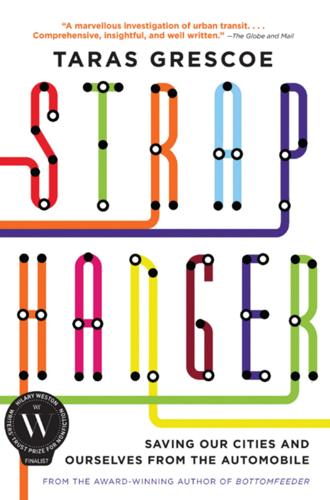
Straphanger
by
Taras Grescoe
Published 8 Sep 2011
The typical Copenhagen bicycle has high handlebars, which allow for a comfortable upright posture, a basket on the headset, a mud guard over the chain, and a rat-trap above the rear fender. They are cheap enough to be practically disposable; the exceptions are cargo bikes, which have become something of a status symbol. These sturdy tricycles, with two small, swiveling front wheels and deep round cargo bays that call to mind pelicans’ bills, look like sleeker, more maneuverable versions of the bikes that ice-cream vendors pedal. They have become the SUVs of Copenhagen; Lindholm said a quarter of all Copenhagen families with two or more kids now own a cargo bike, and a new Nihola, one of the most coveted brands, can cost $4,000. Even Denmark’s crown prince Frederik is regularly photographed ferrying his youngest son around in a Nihola bike.
…
“You can easily carry three children in a cargo bike, and a week’s worth of groceries,” said Lindholm, as we pulled to the curb in the back-streets of Vesterbro, a working-class district undergoing rapid gentrification. Outside a six-story apartment building, a pink fiberglass shelter in the shape of an automobile took up a parking spot that would normally have been occupied by a car. A pilot project of the municipal bike program, the shelter, which looked something like a Studebaker spun out of cotton candy, was divided into flaps that could be lowered and locked to provide secure overnight parking for four cargo bikes. “We love that cargo bikes have exploded in popularity, but they are difficult to park at regular bike racks.
…
After strolling down Pusher Street, where bricks of Nepalese and Moroccan hashish were neatly laid out on cloth-covered tables, I poked my head into Christiania Bikes. In 1984, a blacksmith named Lars Engstrom built a front-loading cargo bike for his wife, Annie, to ferry their kids around Christiania. His design was adopted by the Danish post office and would later inspire the Nihola cargo bike. I saw examples of the commune’s ingenious mode of transportation, often emblazoned with the distinctive three-dotted Christiania flag, outside day care centers and organic bakeries. Leaving Christiania, I pedaled to the western side of the downtown and along the Søerne, a series of interlinked rectangular basins dotted with swans and lily pads, until I reached the “Potato Rows,” a half-dozen parallel streets of buff-colored brick row houses.
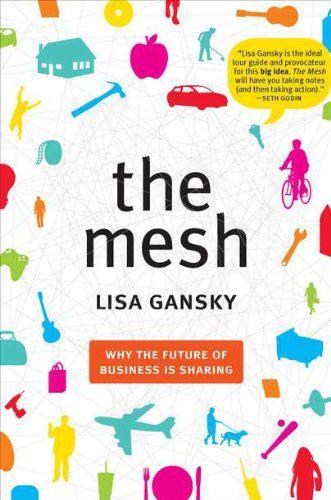
The Mesh: Why the Future of Business Is Sharing
by
Lisa Gansky
Published 14 Oct 2010
For instance, I would like to see more companies offer cargo bikes, which have a longer chassis. On a cargo bike, a parent can carry a kid or two to the market with no crying—by the parent or child—and no lost beverages. Most car trips are for less than two miles from home. A bike becomes a more realistic form of transportation when you can use it to haul a small piece of furniture, or carry three bags of groceries and a child back and forth to a store a few miles away. In North America only a few companies, such as Specialized and Trek with Gary Fisher, make or distribute cargo bikes. In Denmark and in Amsterdam, a number of companies build cargo bikes.
…
In Denmark and in Amsterdam, a number of companies build cargo bikes. The cargo bike example highlights a key advantage to Mesh businesses. They often offer different tools for different jobs—a cargo bike for trips to the store, but a light, fast road bike for taking a ride around the park. Having access to a variety of tools, such as electric routers or hydraulic lifts, is cumbersome under the ownership model. But it makes sense for a tool library. A man in Sonoma County, California, created just such a library by asking people to donate tools they weren’t using, and then lending the tools out. With a car-sharing service, you might check out a van to take a group to the park on Saturday, a pickup truck to haul lumber on Sunday, and a small hybrid to drive to work on Monday.
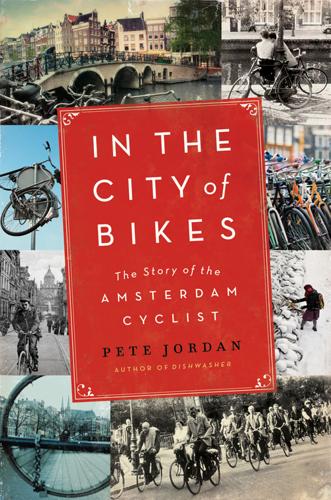
In the City of Bikes: The Story of the Amsterdam Cyclist
by
Pete Jordan
Published 20 Aug 2012
Amy Joy wouldn’t be joining me in Amsterdam until a month and a half later. What I really wanted her to see was the impressive number of kids riding as passengers. Many of them rode behind their parents in rear seats, the kind I’d seen used in the United States. Other kids rode in large wooden boxes on elongated cargo bikes, contraptions I’d never seen in America. Some infants rode in little seats between their parents and the handlebars, complete with little windshields. Babies rode in slings strapped to their parents’ chests. One girl stood on the rear rack of her mother’s bike while holding on to her mom’s shoulders—like a little trick rodeo rider preening atop her horse.
…
Just stop at the wayside inn for a glass of milk, a bar of chocolate, a ham sandwich. . . . Back then: everyone on bikes to the bulb fields! Nowadays: on a wobbly, rusty old bike to the farmers for spuds. “General Hunger” has called the roll on the IJ Ferry and his emaciated followers have reported themselves present. Wretches with ramshackle vehicles, patched up cargo bikes without tires, rented handcarts or the chassis of a baby carriage laboriously dragged along by a rope. “General Hunger” points toward the north. . . . With a thousand other starvelings, we have pedaled on bare rims from Amsterdam to the extreme north of North Holland. . . . A thousand starving wretches, a thousand bicycles without tires, rattling and clattering like machine-guns, bumping and jolting over bricks, rubble and concrete. . . .
…
Though something seemed fishy about the situation and the guy (he said he would technically remain living there and as proof to any nosy authorities, he would keep his own [smoke-drenched] clothes in the row house’s smaller bedroom), the fact was: we could afford the place, we could legally register there and—most important—we could have it. So we took it, happy and relieved to still be living in Amsterdam. Unlike previous moves within Amsterdam, where I had moved all our belongings on Brownie, this time I transported all our stuff on a huge cargo bike borrowed from Amy Joy’s employer on a snowy February day. A few months after we had settled into our new digs, it was time for the baby to appear. When its due date arrived, though, the kid was still nowhere to be seen. To try to coax the kid out, Amy Joy employed every old wives’ tale remedy said to induce labor, including eating pineapple cores, drinking a raspberry leaf infusion, doing breathing/pushing exercises, eating spicy food, drinking tonic water, receiving foot reflexology, eating parsley, stimulating her nipples, sniffing tropical flowers, drinking a small glass of red wine before bed, eating ginger, receiving acupressure above her heels and in the crevice of her thumbs, having intercourse, drinking castor oil, eating dark chocolate, ingesting a blue cohosh tincture, orgasming daily and eating eggplant parmesan.

Nomad Century: How Climate Migration Will Reshape Our World
by
Gaia Vince
Published 22 Aug 2022
Some of this pollution actually has a cooling effect on the atmosphere, even though it is a horrible health hazard, and so as shipping emissions are cleaned up, this ‘hidden heat’ will need to be accounted for. 7. I have had an electric cargo bike for the past five years, which I use for the school run, local trips and picking up groceries; in 2021, my local London neighbourhood brought in a cargo bike loan scheme in an initiative to get more cars off the road. 8. Ken Caldeira and Ian McKay, ‘Contrails: Tweaking flight altitude could be a climate win’, Nature 593:7859 (2021), p. 341. 9. Daron Acemoglu and James A.
…
City living will mean dense apartments with private balconies, roof gardens or yards, and shared outside space. City landscaping will include water management and storage, with ponds and canals, and spaces for socializing. Transport will have to be largely by foot or pedal – including electric cargo bikes and rickshaw taxis. This is a particular challenge for North American cities, which tend to be low, sprawling and car-based. But with hundreds of millions of migrants needing new housing, this is an opportunity to build dense, transit-friendly communities. Where more powerful vehicles are required for longer journeys or heavier loads, they will have to be electric, and mostly pooled vehicles or rentals.
…
As we move fully into the urban age, today’s polluting cars cannot all be replaced with their electric equivalents – even if we could stand the gridlocked traffic of millions of private vehicles, the energy costs of the material resources involved are too great. Moving around our cities will be safer, healthier and quicker using electrified public transport and incarnations of the electric cycle rickshaw and cargo bike.7 Where electric vehicles are necessary, they could be hired or shared. Charging, too, can be distributed – there are already apps that connect drivers to households with electric-vehicle chargers that they will share for a fee. Flying is harder to decarbonize. However, it is contrails, the vapour trails made by planes, not carbon dioxide, that cause two-thirds of the climate impact of flying, accounting for roughly 2 per cent of global warming.
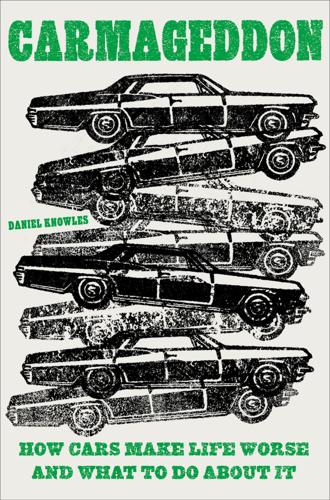
Carmageddon: How Cars Make Life Worse and What to Do About It
by
Daniel Knowles
Published 27 Mar 2023
In London and New York City, almost every food delivery rider rides one; various firms rent them out for around £40 a week, or $150 a month in New York. Electric motors also make other types of bikes, such as cargo bikes, which have enormous front boxes capable of carrying children or quite a lot of groceries, far more plausible as a means of transport. You see a lot of them in London and Paris these days too, carrying much larger deliveries around—the sorts of quantities you would otherwise need a van to carry—at much higher speed. But you even see cargo bikes in Chicago, New York, and Los Angeles nowadays—in Chicago, versions that were mostly likely sold by Jon. On the 606, a former elevated railway track now converted to a park in Chicago, I counted nine parents carrying their children in cargo bikes or in bike trailers on one summer’s day.
…
In 2022, Donald Trump’s former ambassador to Denmark, Carla Sands, tweeted that in Denmark, people are so poor that they cannot afford to drive, citing her diplomatic driver’s daily cycle to work. Danes responded by noting that if money were the problem, then their royals must be poor as well, as the Crown Prince routinely cycles his children around in a cargo bike. Najdovski told me he reckoned that almost any city could do at least some of what Paris is doing, and what Amsterdam and Copenhagen have already done, if they just have the will. When I spoke to him, it was in the middle of the COP26 climate talks in Glasgow, Scotland, and he told me he was dismayed that the world’s leaders, including Emmanuel Macron, the president of France, seemed obsessed with electric cars, instead of trying to change the incentives about how people live.
…
On the 606, a former elevated railway track now converted to a park in Chicago, I counted nine parents carrying their children in cargo bikes or in bike trailers on one summer’s day. It is faster than taking public transport and cheaper than driving and parking. One thing that has helped people realize that bikes can be better than cars has been the proliferation of flexible bike rental systems. In Chicago, despite owning my own bike, I also use the Divvy bikes. It costs $120 a year, but residents on lower incomes can sign up for $5. In a city where one in five people lives in poverty, and many neighborhoods lack good public transport options, it is a pretty good alternative way to get around that simply did not exist a decade ago.
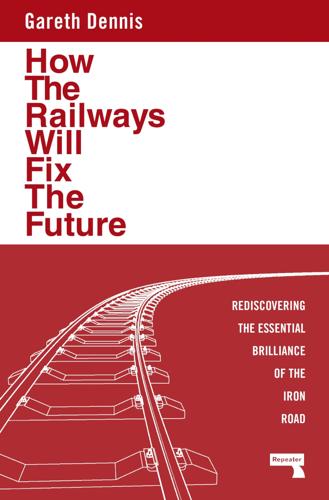
How the Railways Will Fix the Future: Rediscovering the Essential Brilliance of the Iron Road
by
Gareth Dennis
Published 12 Nov 2024
Interchange stations should be just that, interchanges, and where different modes meet, their interchange stations should be integrated as well. Bus and train stations should be located in the same place! Again, this is as critical for freight. Rail needs to be integrated into local distribution hubs, including cargo bike and electric van hubs. Rail also needs to integrate with road haulage hubs and, of course, harbours and ports. Interchange between modes has been accelerated, mostly for good, thanks to containerisation, but this only works if you’ve actually plugged the railway into the rest of your supply chain.
…
So by 2030, rail will have had to take a greater share. At the same time, the introduction of reduced- or zero-emission zones in our cities, as well as the necessary pursuit of zero-fatality cities, will eliminate the last-mile advantages of moving goods by road. As soon as there is a need for trans-shipment from trucks to vans or cargo bikes at the fringes of the urban core, road loses its advantage over rail. At this point, the greater efficiency of rail haulage will drive a significant modal shift of freight away from roads, even under existing regulatory and market conditions. By next decade, rail must be ready for this change. One of the key challenges for the condensing and municipalisation of urban logistics and for better bus provision is that publicly owned city centre industrial space (such as former postal facilities or bus depots) has been divested over successive decades.
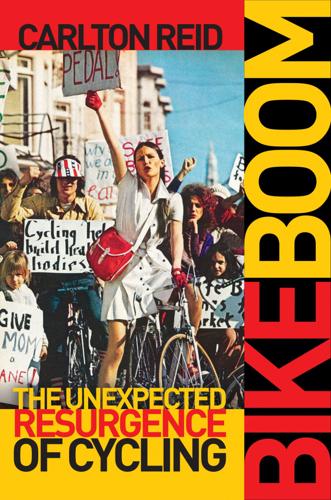
Bike Boom: The Unexpected Resurgence of Cycling
by
Carlton Reid
Published 14 Jun 2017
The Office of Price Administration commissioned bicycle manufacturers Huffman and Westfield to make the Victory Bike. This was launched in January 1942 by OPA “price boss” Leon Henderson at a press shoot in Washington, DC. The Victory Bike was robust and had a large steel basket on the front. (Today we’d call it a cargo bike.) Henderson demonstrated its agility in front of the Capitol building, riding no-handed while chomping on an unlit cigar. Later in the shoot, he rode for some distance with his female stenographer in the basket, ahead of a “caravan of cycling [OPA] clerks.” Press reports projected that 750,000 Victory Bikes would be sold each year to “help meet [the] auto shortage.”
…
Always willing to suffer for the cause, Silverman was sentenced to eight days in the clink for refusing to pay a small fine levied after he was caught illegally painting a cycle lane on a residential street. (He was released after two days.) “Bicycle Bob” is now 83, partially blind, and no longer able to cycle—I pedaled him around his old haunts with the help of a cargo bike—but he remains passionate about what he and Morissette were able to achieve as the leaders of Le Monde à Bicyclette. In 1998, despite being salaried, they wound up the group. “We’d achieved all our aims,” Silverman told me. “There was nothing else to campaign for.” MAB was later revived, and the group’s mission is continued by a new generation of vélorutionaries.
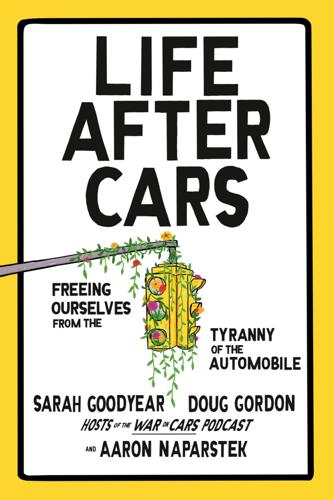
Life After Cars: Freeing Ourselves From the Tyranny of the Automobile
by
Sarah Goodyear
,
Doug Gordon
and
Aaron Naparstek
Published 21 Oct 2025
He started his own version on Earth Day in April 2022, attracting an impressive seventy-five students in the first outing. By the following school year, the Alameda Bike Bus had more than doubled in size, with approximately one hundred seventy students riding behind “Coach” Balto on his Dutch-style cargo bike. Balto posted a video of his bike bus to TikTok and, just like the Barcelona Bicibús video, it also went viral. The online attention resulted in stories in The Washington Post, USA Today, People, and NBC Nightly News. Balto was interviewed on the Today show and by Kelly Clarkson for her daytime talk show.
…
And you can’t have a better quality with more traffic…. If you have the political will, then the changes are possible.” Emeryville, California: “People Will Change Their Minds” The day Sarah showed up at Emeryville City Hall to meet with John Bauters—known on social media as “America’s Bike Mayor”—he was standing out front next to a cargo bike with his fluffy white dog, Miss Reyna, in the box. She was wearing a pair of goggles. It was all almost too adorable. Sarah was there to see what Bauters and his allies in Emeryville have been working to create as part of the city’s Active Transportation Plan, adopted in 2023—a well-connected bike infrastructure network that links the entire small city, expands and improves green space, and improves pedestrian and bike access to public transit.
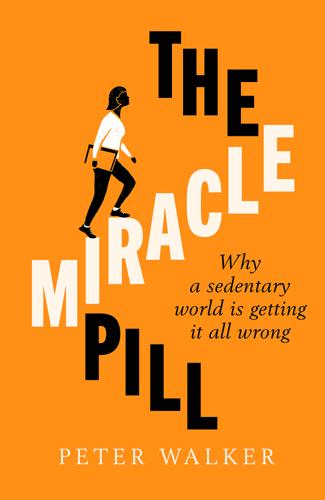
The Miracle Pill
by
Peter Walker
Published 21 Jan 2021
We measured people’s heart rates and it showed that riding an e-bike in terms of heart rate response is actually more energetic than walking. It’s obviously not as energetic as conventional cycling, but it’s not a no-exercise option. It’s a really great way of getting moderate-intensity activity.’30 Electric assistance is also helping to bring more activity back to the workplace. One of the fastest-changing areas of e-bikes is cargo bikes, where even a fairly small motor can help a rider carry loads into the hundreds of kilos. Such bikes are increasingly being used in some cities to replace vans for the so-called last mile of urban deliveries, from a city distribution point to people’s addresses. But these innovations are, again, often dependent on having sufficiently safe streets.
…
In keeping with the more communal Finnish approach, like many of the country’s libraries it does much more than just lend books and serve very good coffee. There are meeting rooms and recording studios which can be booked for free, as well as sewing machines and even a 3D printer. You can also borrow sports equipment, while some other libraries can lend a pedal-powered cargo bike able to carry heavy loads. This is not to say that this is the only model for every country. Helsinki’s library cost nearly €100 million, and it takes a certain political consensus for voters to accept the levels of tax needed to fund not just projects like this, but the wages of Joonas Niemi’s Finnish Schools on the Move teams, as well as one sports facility per 175 people.

Vancouver Like a Local
by
Jacqueline Salomé
g Sweet Treats g Contents Google Map EARNEST ICE CREAM Map 4; 1829 Quebec Street, Mount Pleasant; ///beamed.relaxing.crowned; https://earnesticecream.com For a famously rainy city, Vancouver has a lot of good ice cream. And it’s all thanks to pioneering places like Earnest. Since it began serving scoops from a cargo bike back in 2012, Earnest has become a city institution. It’s tricky to pin down what we love most, from the growing list of plant-based flavors to the partnerships with community organizations. This is a lesson in good local ice cream done right. » Don’t leave without attempting to get your hands on a pint of Earnest’s spruce tip ice cream – yes, it’s made with literal trees.
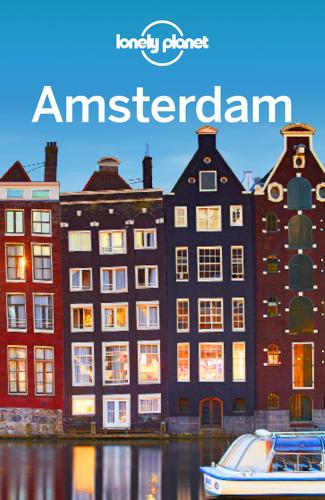
Lonely Planet Amsterdam
by
Lonely Planet
Ajax Bike ( GOOGLE MAP ; %06 1729 4284; www.ajaxbike.nl; Gerard Doustraat 153; bike rental per 4/24hr from €6.50/9; h10am-5.30pm Mon-Sat, noon-4pm Sun; j4 Stadhouderskade) Off the beaten path in De Pijp, with bargain prices on city, kids', tandem and cargo bikes. Bike City ( GOOGLE MAP ; %020-626 37 21; https://bikecity.nl; Bloemgracht 68-70; bike rental per day from €14; h9am-5.30pm; j13/14/17 Westermarkt) Jordaan shop; bikes carry no advertising, so you'll look like a local. Black Bikes ( GOOGLE MAP ; %0852 737 454; http://black-bikes.com; Nieuwezijds Voorburgwal 146; bike rental per 3/24hr from €9/13, electric bikes €24/37.50; h8am-8pm Mon-Fri, 9am-7pm Sat & Sun; j1/2/5/13/14/17 Raadhuisstraat) Signless company offering city, kids', tandem and cargo bikes at 10 shops, including this one in the centre.
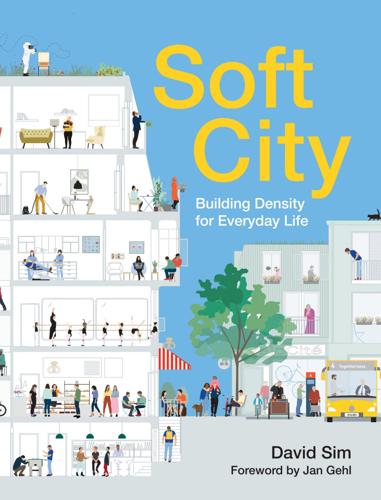
Soft City: Building Density for Everyday Life
by
David Sim
Published 19 Aug 2019
When thoughtfully designed, a cycle lane can also improve the walking experience by protecting the pedestrians from motorized traffic. Like pedestrians, cyclists come in many forms and have different abilities and behaviors. There are long-distance commuters and Lycra-clad racers alongside grandmothers and postal carriers. Bicycles come in different sizes, from tiny child-sized kick bikes to big cargo bikes. There are other small-wheeled phenomena like skateboards, roller skates, and kick scooters. Significant additions to this wheeled group include electric bikes and electric scooters. E-scooters, apart from being seen as great fun, lower the threshold for active mobility use, while e-bikes allow more people to travel farther, faster, in worse weather, and, importantly, uphill.
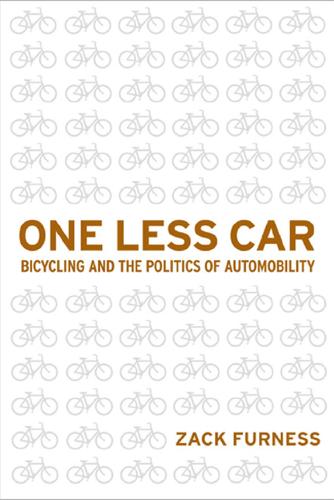
One Less Car: Bicycling and the Politics of Automobility
by
Zack Furness
and
Zachary Mooradian Furness
Published 28 Mar 2010
The “outlaw bike subculture” Carlsson sees coalescing around bike gangs, artists, community cycling project volunteers, and mutant bike welders is at the forefront of this trend: it is a subculture that “spontaneously reuses and recycles in ways environmental advocates of recycling can only dream about.”59 This shifting sensibility is not constrained to one specific subculture or geographical locale, however, nor is it limited to the production of bikes that are simply designed for fun. indeed, there is a growing support for modes of tinkering and customization that are exclusively geared toward utilitarianism, whether in the form of stripped-down bicycles or more emphatically in the circulation of “open source” designs like aaron Wieler’s bike carts and bicycle ambulances or the cargo bike extensions that ross Evans designed while volunteering in Central america and now sells through his company, Xtracycle.60 These technologies have far-reaching possibilities as both individuals and organizations are beginning to utilize these and other Diy designs worldwide, whether in service of delivering aiDS medication to patients, carrying crops to markets and kids to school, or simply allowing people to use bikes in place of cars for everyday trips to the grocery store.
…
Over a century later they continue to turn out industrial-strength cargo vehicles, food service carts (including most hot dog and ice cream carts in service today), and several models of bicycle and tricycle from their factory in Queens, new york. in addition to setting a precedent for established U.S. cargo bike/trike makers like Human powered Machines (Eugene, Oregon) as well as upstarts like Haley Tricycles (philadelphia, pennsylvania), Worksman illustrates some of the ways in which pedal-powered technologies can be used for work as well as leisure.123 They also symbolize the possibilities for coupling domestic production with sustainable energy production in order to produce affordable vehicles: in 2007 Worksman became one of the first bike companies—and one of the few new york City manufacturers—to use solar panels in order to generate part of the energy necessary to run their factory (roughly 25 percent).124 Conclusion Through the production of alternative bike media and the popularization of bicycling as a subcultural practice, bicycling gets brought into, and reconfigured within, an entire “network of empowerment” associated with Diy culture, or what lawrence Grossberg calls an a affective alliance: an “organization of concrete material practices and events, cultural forms and social experience which both opens up and structures the space of our affective investments in the world.”125 Thus, while bicycles have become another scene-accredited lifestyle accessory for many urban punks and zinesters, the popularity and acceptance of bicycling is far more than a surface-level signifier of subcultural capital.126 it is indicative of how people are redefining bicycle transportation and bicycle technologies on their own terms, in ways that both differ from and in many ways actively contest their dominant meaning and representation in the United States.
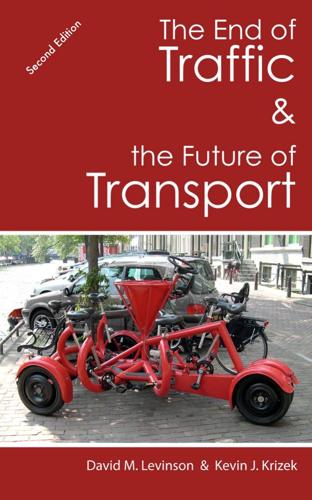
The End of Traffic and the Future of Transport: Second Edition
by
David Levinson
and
Kevin Krizek
Published 17 Aug 2015
The question of how to occupy the space that will reaped from both road repurposing and possible paint delineation is a big one. Cars can do just as a much (if not more) with less space (owing to automation); the same arguments extend to micro-transit. Consider the range of emerging services: E-vehicles, bus rapid transit, light rail, various types of scooters and mopeds, microcars, cargo bikes, carsharing, bikesharing, ridesharing services and so on. Each mode has its own technical specifications and could benefit substantially from dedicated infrastructures, ranging from separated lanes and preferential parking places, to grade-separated solutions and supporting energy services. Clearly, however, large-scale provision of infrastructure for all these modes is impossible, if only for lack of space and funds.
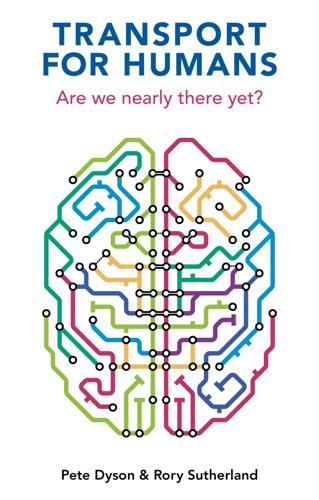
Transport for Humans: Are We Nearly There Yet?
by
Pete Dyson
and
Rory Sutherland
Published 15 Jan 2021
We need to be sensitive to the reality of the lives of people who use cars rather than stigmatizing them for driving. The electric car will play a crucial role in all scenarios for future mobility, though it cannot be the only answer and we must surely strive to invent and invest to make alternatives more alluring and easier to choose. Targeting investment at e-bikes and e-cargo bikes in hilly regions like North Yorkshire is one such strategy. Research from the University of Leeds used topographical and physiological models to work out how far people could travel and then combined this information with knowledge of existing car use and found that 50% of existing trips could be made by e-bike.26 Are we nearly there yet?
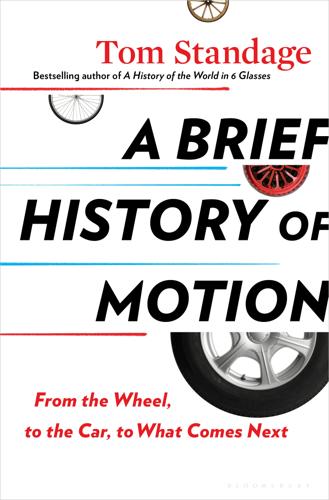
A Brief History of Motion: From the Wheel, to the Car, to What Comes Next
by
Tom Standage
Published 16 Aug 2021
They imposed lower speed limits, gradually replaced on-street parking with cycle lanes and wider sidewalks for pedestrians, and excluded cars from some areas altogether. Helsinki has established a 745-mile network of bike paths, which are even cleared of snow in winter; Oslo raised parking charges and tolls to enter the city, established car-free zones around schools, and shifted some city-center deliveries from vans to electric cargo bikes. Together with high levels of investment in public transport, all this has reduced the volume and speed of traffic on city streets, with a resulting fall in deaths and injuries. In 2020 cities around the world, from Paris to Milan to Kampala, took advantage of coronavirus lockdowns to move in the same direction, creating new bike lanes and broadening sidewalks to reclaim street space from cars.

Road to Nowhere: What Silicon Valley Gets Wrong About the Future of Transportation
by
Paris Marx
Published 4 Jul 2022
The physical changes still had the effect of discouraging driving, even without banning it outright, while promoting social interaction and means of mobility that allowed people to get exercise and to see one another on their journeys. The council created new incentives for people to buy bicycles and made new investments in the transit system to encourage people to get out of their cars. It even worked with the public roads administration and DHL to shift deliveries from trucks to cargo bikes. The plan was certainly not perfect, but it was a serious effort to change how people moved around their city, and one that most people supported. Oslo was not the only city to do something like this. In September 2016, Paris announced its intention to convert a highway that ran along the Rive Droite (the Right Bank of the Seine) into a pedestrian space.
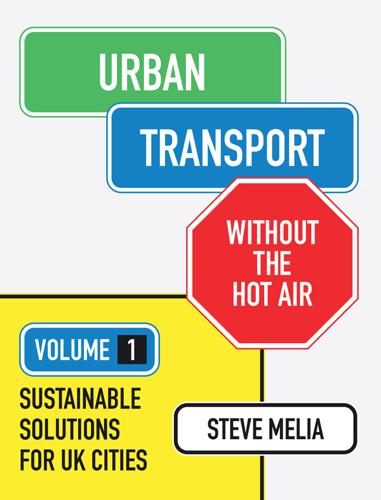
Urban Transport Without the Hot Air, Volume 1
by
Steve Melia
Local politicians and transport planners cannot resolve those tensions on their own but framing cycling issues in a different way could help to alleviate them. The Hackney approach towards public realm improvements that also benefit cyclists is one way. Another way is to widen the target beneficiaries of cycling infrastructure. Dutch cycle routes are frequently used by families with children in a range of trailers and cargo bikes and also by people with disabilities using mobility scooters and handcycles. Designing for all these people and showing them on publicity materials would help dilute the perception of public money being spent on a narrow ‘out-group’ of fit middle-aged men.440 Hostility to cyclists in the UK has been exacerbated by forced sharing of space between cyclists and pedestrians.

Streetfight: Handbook for an Urban Revolution
by
Janette Sadik-Khan
Published 8 Mar 2016
NYC DOT Small businesses in New York are increasingly taking advantage of our bike rack program, which gives them the ability to request bike racks (what we call “corrals”) that replace curbside parking spaces outside their establishments. Instead of one car monopolizing a parking space all day, a corral can house a dozen or more bikes at any moment, with turnover throughout the day. Many shops have stopped using van and car services to shuttle goods through the streets, investing in cargo bikes that can more quickly haul loads across town without being stuck in bumper-to-bumper traffic. Restaurants and cafés also requested street seats, turning a few parking spaces into public table seating for everybody. Local shops reported increases in sales. NYC DOT New York real estate agents have recognized the economic benefits of our Citi Bike stations, which are a selling point for potential tenants, just as the proximity of subway stations is included in property listings.

Ghost Road: Beyond the Driverless Car
by
Anthony M. Townsend
Published 15 Jun 2020
After passing through the city center, the buses might split up again to increase the number of destinations served with a single-seat ride. Finally, with cool-headed software taking the place of brake-pumping drivers, rides could be smoother and more like the comfort of riding a train. Figure 3-3. Rovers and software trains. (a) AV wheelchairs provide indoor and outdoor mobility for nonambulatory people. (b) Cargo bikes become electrified, and automated, providing low-emission, safe, and quiet mobility for human-assisted deliveries. (c) Scooters employ limited automation to deadhead between rides and return to charging points overnight. (d) AV hoverboards store themselves in back alleys and under parked cars, and can be hailed electronically on a moment’s notice.
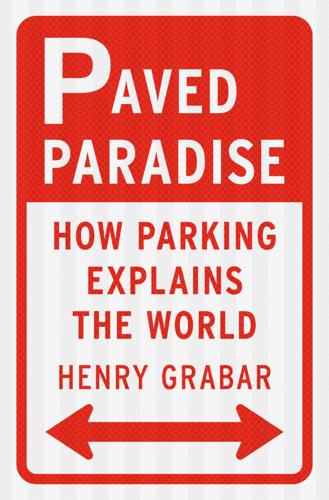
Paved Paradise: How Parking Explains the World
by
Henry Grabar
Published 8 May 2023
The future Manhattan borough president Mark Levine wanted to change the city’s zoning, allowing garages to rent street-level space to delivery companies for staging so they could transfer boxes to carts and bikes for local delivery in reserved “green loading zones.” Whole Foods had already come to the realization on its own that trucks were a waste of time, space, and money; its Manhattan stores loaded cargo bikes for delivery at the curb outside. If this was what a city could do with 8,500 spots, what could it do with 50,000? With 500,000? In a 2021 report, Transportation Alternatives made a pitch for reclaiming 25 percent of the street space New York had allocated to cars. What could we have? Thirteen new Central Parks.
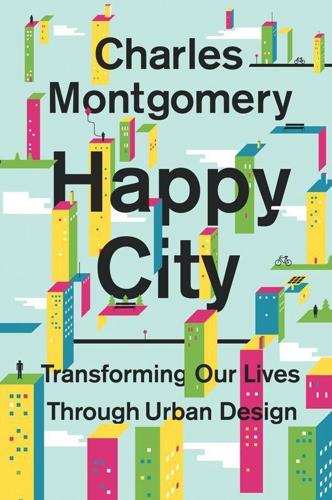
Happy City: Transforming Our Lives Through Urban Design
by
Charles Montgomery
Published 12 Nov 2013
The mayor, Frank Jensen, biked to work that morning. So did several ministers of the national government. So did just about anyone who considered himself part of the city’s culture of urban hipness. The height of cutting-edge style in Copenhagen is not a sports car, but the three-wheeled front-end cargo bike dubbed “the Copenhagen SUV.” A quarter of families in the city with two children own one of the boxy contraptions. This behavior is a product of design. People make different choices when they are truly free to choose. Although cycling was hugely popular in Denmark a century ago, Danes gave it up en masse during the first few decades of the auto age.* But persistent congestion and the energy crisis of the 1970s combined to produce a public backlash against auto-centric road design.

The Windup Girl
by
Paolo Bacigalupi
Published 15 Sep 2009
Whatever political problem he has become entangled in will end with the ugliness of all such conflicts. Emiko wonders if she can simply slip back inside the apartment now that everyone is gone. Near the building's entrance, a pair of men have begun handing out fliers to everyone they can reach. Another pair coast past on a cargo bike, its bin stacked with more fliers. One man jumps down and sticks a flier to a lamp post before hopping back up on the slowly moving bike. Emiko starts toward the bike to collect a flier herself, but a prickle of paranoia stops her. Instead, she lets them rattle past, then cautiously approaches the light pole to read what they have posted.

Countdown: Our Last, Best Hope for a Future on Earth?
by
Alan Weisman
Published 23 Sep 2013
A fishing village, San Agapito, one of six packed onto Verde Island, hugs a turquoise inlet on its southeastern shore. Behind a beach of light brown sand, coconut palms rise above a row of neat houses of bamboo and basket-weave thatch. A path lined with multicolored painted stones, barely wide enough for a three-wheeled cargo bike, is the only road. In the yards grow yellow orchids, hibiscus, anthuriums, and jasmine. The village is spotless—the road is swept daily—and quiet: the only electricity is from a diesel generator that runs after sunset for four hours. There’s a whitewashed Catholic church with a blue tin roof, and a one-bed maternity ward and immunization clinic.